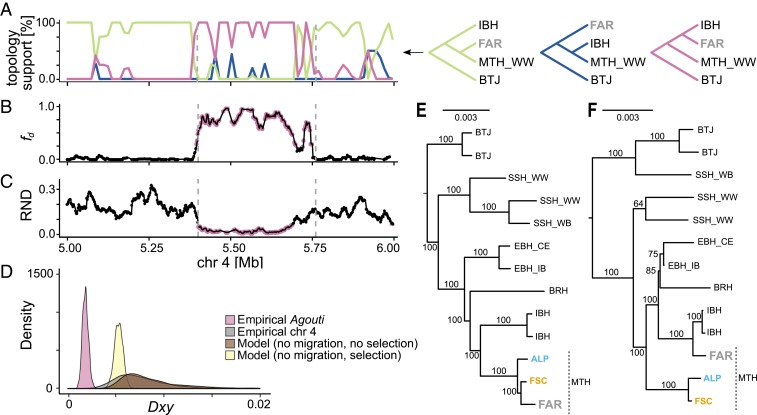Fig. 4.
The evolution of the winter-gray variant of the mountain hare: signatures of introgression from the Iberian hare. (A) Weightings for 3 tree topologies including the Faroese mountain hare (FAR), winter-white mountain hares (MTH_WW), the Iberian hare (IBH), and the black-tailed jackrabbit (BTJ), plotted with loess smoothing (span = 0.025). (B) Fraction of introgression (fd) between the Iberian hare and the Faroese mountain hare (20-kb windows with 2-kb steps). Pink dots indicate 1% highest values on chromosome 4. (C) RND between the Faroese mountain hare and the Iberian hare (20-kb windows with 2-kb steps). Pink dots indicate 1% lowest values in chromosome 4. (D) Distributions of dXY between the Faroese mountain hare and the Iberian hare on chromosome 4 (gray), at the Agouti region (pink), simulated under a model without migration (brown), and simulated with strong ancestral selection (yellow) (SI Appendix, Fig. S12A). (E) Maximum-likelihood tree with bootstrap supports for chromosome 4. BRH, broom hare; BTJ, black-tailed jackrabbit; EBH_IB and EBH_CE, European brown hares from the Iberian Peninsula and Central Europe, respectively; IBH, Iberian hare; MTH, mountain hares, from the Faroe Islands (FAR), Alps (ALP), and Fennoscandia (FSC); SSH_WW and SSH_WB, winter-white and winter-brown snowshoe hares, respectively. (F) Maximum-likelihood tree for the ∼360-kb Agouti association region.

